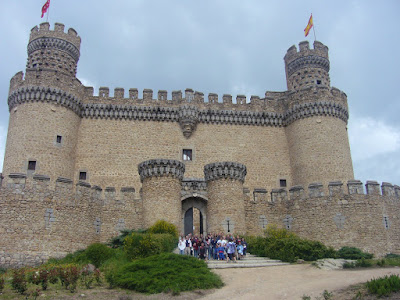
We had a busy, wet day visiting some of the sites near Madrid. Our first stop was at the Monasterio de San Lorenzo de El Escorial. Constructed during the reign of Felipe II (16th Century), the site holds an amazing treasury of art. Within the walls of El Escorial are works by El Greco, Titian, and Bernini. One of the most interesting features of the palace/monastery is the placement of the king's bedroom next to the main altar of the basilica with a door / window that opened up so that the ailing king could attend mass without leaving his bed. Sadly we were not able to visit the Basilica due to a wedding that was in progress. I truly wanted the students to see one of the most beautiful sculptures that I have ever seen: A marble Christ on the Cross by Cellini (below is a picture I took of the Cellini Christ from a previous trip). Fortunately we were able to see the Bernini's bronze Crucified Christ.
We also had the opportunity to visit the Pantheon of the Kings where all the kings and their wives are buried beginning with Carlos V down to Alfonso XIII. Two of the most spectacular sites are: 1) The grand staircase with its representation of the Apotheosis of Felipe II and 2) the Monastery's library.
After lounging around and eating lunch on the plaza outside the Monastery, we traveled a few kilometers to the Valle de los Caídos.
Built inside a mountain the Basilica is the resting place for José Antonio Primo de Rivera and Francisco Franco. It was consecrated as a basilica by Pope John XXIII in 1960. Interestingly, the basilica is larger in square footage than St. Peter's in Rome. In order to not "out do" the Roman site, a portion of the basilica at the Valle de los Caídos was roped off and excluded from consecration. Above the basilica is a the tallest memorial cross in the world (152.3 meters in height).
Our last stop was the Castillo de Manzanares el Real. This castle was once the home of the powerful Mendoza family, the Marquis of Santillana. The most famous of this noble family was Iñigo López de Mendoza a 15th-century poet.


















































